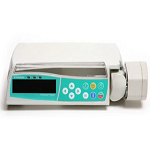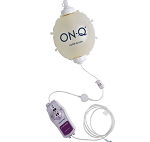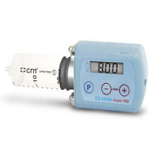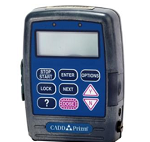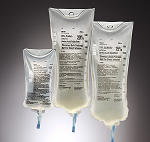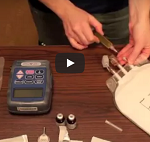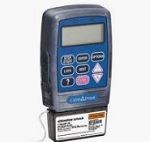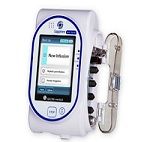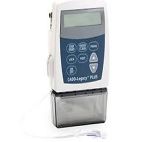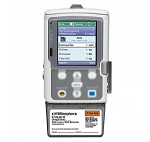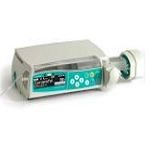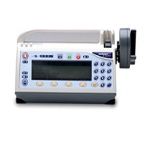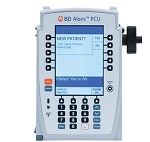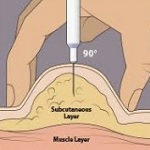

What is a subcutaneous injection?
A subcutaneous injection is a shot given into the fat layer between the skin and muscle. Subcutaneous injections are used to give small amounts and certain kinds of medicine. There are 3 parts to a syringe: the needle, the barrel, and the plunger. The needle goes into your skin. The barrel holds the medicine and has markings on it like a ruler. The markings are for milliliters (mL). The plunger is used to get medicine into and out of the syringe.
- Insulin syringe: This holds a maximum of 1 mL of medicine. The syringe has markings from 10 to 100. The marking at 100 is the same as 1 mL. The marking at 50 is the same as ½ mL.
- Tuberculin syringe: This syringe holds up to 1 mL of medicine. It has a needle that is slightly longer than an insulin syringe. The syringe is marked every 0.1 mL.
Demonstration Videos
Guidelines, Specifications & User Manuals
Subcutaneous Injections – (Drug.com)
Helpful Information

How to Give a Subcutaneous Injection
Before the Injection
- Some medications such as Kineret® and Enbrel® must be injected. These medications come with a kit and a device to inject the medication. Some patients however prefer not to use the kit but to do the injection themselves; much like an insulin injection would be done.
- If your medication is refrigerated, remove the vials from the refrigerator 30 minutes before administration so it can reach room temperature.
- Select a clean, dry work area.
- Gather your supplies:
– Medication
– Sterile water
– Sterile disposable needles and syringes
– Alcohol pads or cotton balls and bottle of rubbing alcohol
– Puncture-proof disposal container*
– Bandaids - Wash your hands well before preparing your medication.
*HINT The container can be a coffee can or leak-proof, closable milk jug. Find out the proper way to dispose of biological waste in your area.
Preparing the Injection
Your doctor and/or clinic nurse will instruct you on preparing your particular dose of medication.
Giving Yourself the Injection
Select your injection site. This must be an area that has a layer of fat between the skin and the muscle. This is called subcutaneous. The following parts of your body have subcutaneous layers:
- outer surface of the upper arm
- top of thighs
- buttocks
- abdomen, except the navel or waistline
- If you are very thin do not use the abdomen as an injection site.
- Do not use the same site for injections each time.
- Rotate your injection sites in a regular pattern. You should be at least 1 ½ inches away from the last injection site. Jot down on your calendar where you gave you last shot. This will help prevent giving the shot in the same place too soon.
- Select a site and cleanse the area (about 2 inches) with a fresh alcohol pad, or cotton ball soaked in alcohol.
- Wait for the site to dry.
- Remove the needle cap.
- Pinch a 2-inch fold of skin between your thumb and index finger.
- Hold the syringe the way you would a pencil or dart. Insert the needle at a 45 to 90 degree angle to the pinched-up skin. The needle should be completely covered by skin. If you do this quickly, you will feel very little discomfort.
- Hold the syringe with one hand. With the other, pull back the plunger to check for blood. If you see blood in the solution in the syringe, do not inject. Withdraw the needle and start again at a new site.
- If you do not see blood, slowly push the plunger to inject the medication. Press the plunger all the way down.
- Remove the needle from the skin and gently hold an alcohol pad on the injection site. Do not rub.
- If there is bleeding, apply a bandage.
- Immediately put the syringe and needle into the disposal container*.
USE OF THIS SITE
All information contained within the Johns Hopkins Arthritis Center website is intended for educational purposes only. Physicians and other health care professionals are encouraged to consult other sources and confirm the information contained within this site. Consumers should never disregard medical advice or delay in seeking it because of something they may have read on this website.
Related Devices
The Perfusor Space 2nd Generation Syringe Pump
The Perfusor® Space 2nd Generation Syringe Pump The Read more...
Elastomeric IV Pump Systems – Instructions
ON-Q PainBuster Post-Op Pain Relief System. ON-Q Read more...
Vista® basic Infusion Pump Instructions
Vista Infusion Pump UPC: 637-202 B. Braun Read more...
Crono Super-PID subcutaneous pump Instructions
Crono Super PID Ambulatory Syringe Infusion Pump Read more...
CADD Prizm IV Pump Instructions
CADD® Ambulatory Infusion Systems, The CADD-Prizm® pump Read more...
TPN Setup with IV pump Instructions
TPN stands for Total Parenteral Read more...
How to prepare and administer TPN Instructions
TPN Administered TPN administration into Read more...
CADD PRIZM 6101 – TPN IV Setup
CADD PRIZM 6101 - TPN IV Setup Read more...
Sapphire Infusion Pump Instructions
Sapphire™ infusion system This unique Read more...
CADD 6500 IV Pump Instructions
CADD Legacy Plus Pump The Legacy Read more...
Hospira GemStar Infusion System
GemStar™ Infusion System From pain management to Read more...
CADD®-Solis Ambulatory Infusion Pump Instructions
CADD®-Solis Ambulatory Infusion Pump with Read more...
Medfusion 3500 Syringe Pump Instructions
Medfusion 3500 Syringe Pump Designed to enhance Read more...
B Braun Syringe Pump Instructions
Perfusor Space Syringe Pump The first syringe pump Read more...
Z-800F – Zyno Medical Ambulatory Infusion System
Zyno Medical's Z-800 F infusion pump Zyno Read more...
Medfusion® 3500 Syringe Pump
Medfusion™ 3500 Syringe Pump The Medfusion™ 3500 Read more...
Zyno Medical Nimbus™ Ambulatory Infusion System Instructions
Nimbus™ II Flex Nimbus™ II Flex is Read more...
Alaris – IV Pump Instructions
Alaris™ Pump The BD Alaris™ PC unit is Read more...
Baxter Sigma Spectrum Infusion Pump
Baxter Sigma Spectrum IQ Infusion System With Read more...
Curlin pump TPN setup Instructions
CURLIN MEDICAL PUMP - TPN The Curlin Read more...
MOOG Medical, Curlin 4000 CMS IV Pump
MOOG Medical, Curlin 4000 CMS The 4000 Read more...


